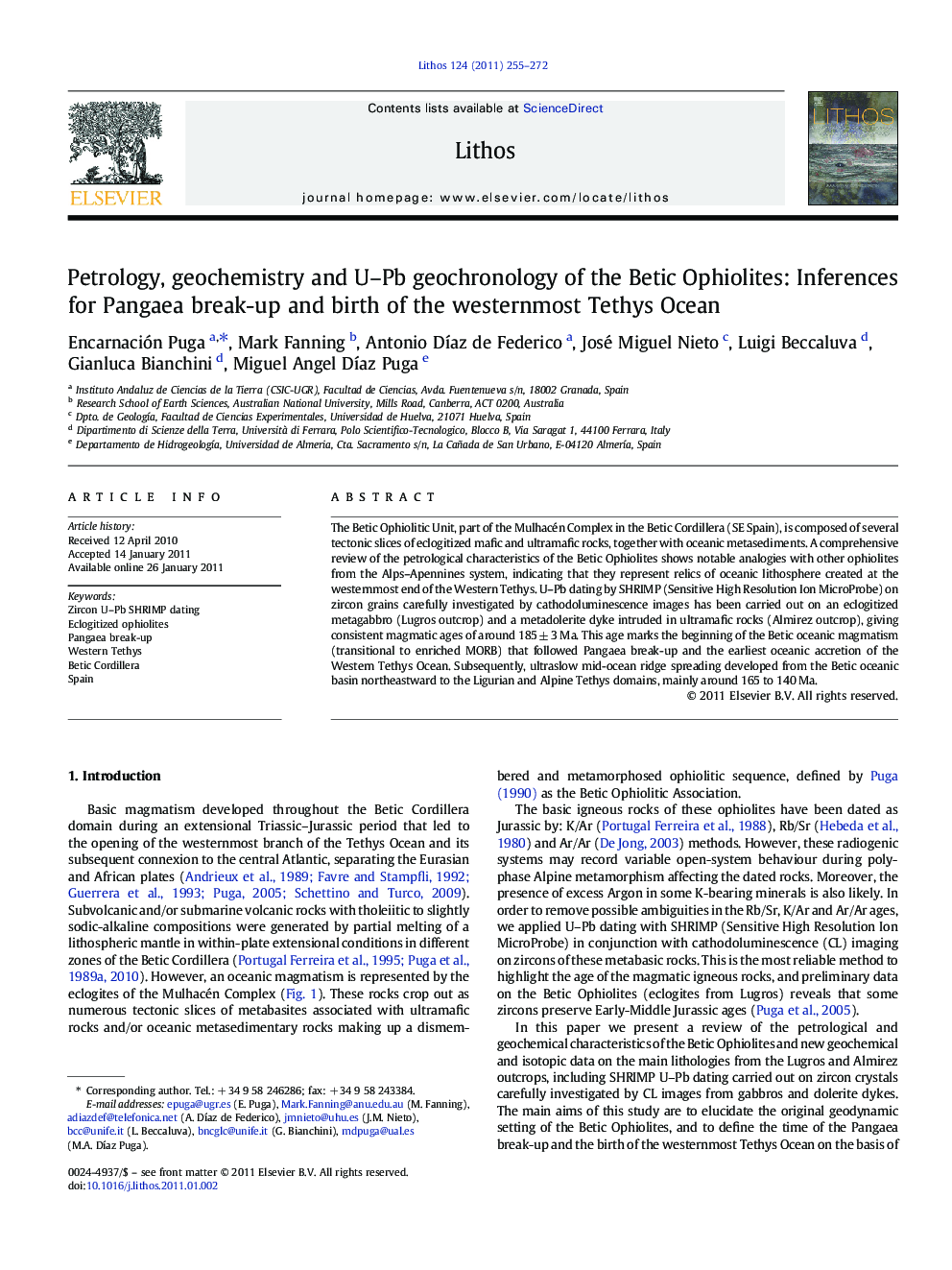| Article ID | Journal | Published Year | Pages | File Type |
|---|---|---|---|---|
| 4716766 | Lithos | 2011 | 18 Pages |
The Betic Ophiolitic Unit, part of the Mulhacén Complex in the Betic Cordillera (SE Spain), is composed of several tectonic slices of eclogitized mafic and ultramafic rocks, together with oceanic metasediments. A comprehensive review of the petrological characteristics of the Betic Ophiolites shows notable analogies with other ophiolites from the Alps–Apennines system, indicating that they represent relics of oceanic lithosphere created at the westernmost end of the Western Tethys. U–Pb dating by SHRIMP (Sensitive High Resolution Ion MicroProbe) on zircon grains carefully investigated by cathodoluminescence images has been carried out on an eclogitized metagabbro (Lugros outcrop) and a metadolerite dyke intruded in ultramafic rocks (Almirez outcrop), giving consistent magmatic ages of around 185 ± 3 Ma. This age marks the beginning of the Betic oceanic magmatism (transitional to enriched MORB) that followed Pangaea break-up and the earliest oceanic accretion of the Western Tethys Ocean. Subsequently, ultraslow mid-ocean ridge spreading developed from the Betic oceanic basin northeastward to the Ligurian and Alpine Tethys domains, mainly around 165 to 140 Ma.
Research Highlights► Betic Ophiolites show geochemical affinities corresponding to ultraslow-ridge accretion. ► Igneous zircon crystallisation age obtained with SHRIMP U-Pb dating is ~185 Ma. ► Zircon rims overgrown during oceanic rodingitisation dated at ~177 Ma. ► Palaeogeographic setting would be westernmost end of Western Tethys. ► Unique evidence of Pliensbachian Western Tethys accretion after Pangaea break-up.
